Pupils encouraged to explore Pictish past using Lego
- Published
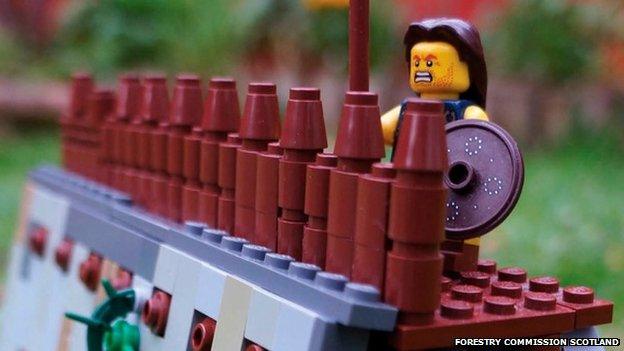
A Lego recreation of a Pict and fort on the cover of the new learning resource for school pupils
Children are being encouraged to explore one of Scotland's most mysterious peoples by recreating their forts and art in Lego and face paints.
Forestry Commission Scotland (FCS) has created a new learning resource for schools on the Picts.
Picts lived in north and east Scotland in the 3rd to 9th centuries AD. Few written records of them survive.
The resource, external also includes an illustrated encounter between Little Red Riding Hood and the Ardross Wolf.
The Ardross Wolf is a symbol stone held in the collection of Inverness Museum and Art Gallery.
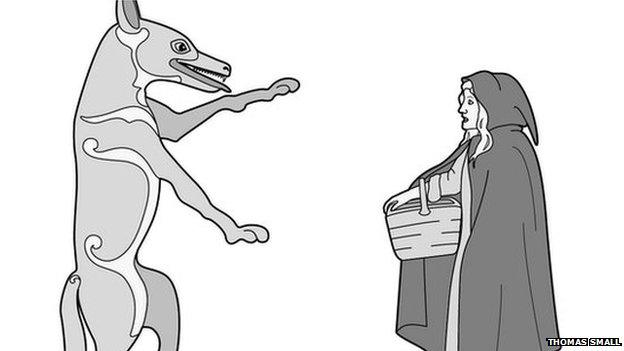
Little Red Riding Hood faces the Pictish Ardross Wolf

Girl with Pictish symbol-inspired face paints
FCS hopes the new approach will encourage school pupils to learn from what is known about the Picts' decoration of other standing stones, such as The Eagle Stone in Strathpeffer.
Also about the hillforts, the remains of which can still be found including at Knock Farril near Strathpeffer.
The commission's learning resource, which involves the online educational tool Scran, external, also suggests that pupils make sketches of Pictish symbols and use them as inspiration for face painting.
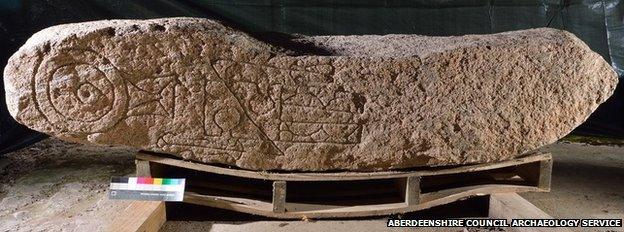
The Pictish Dandaleith Stone was discovered in 2013
Evidence of the Picts are still being uncovered by archaeologists today.
Last August, a team of archaeologists released details on what they described as the most important Pictish stone find to have been made in Moray in decades.
Weighing more than a ton and stretching to 1.7m, the Dandaleith Stone dates from the 6th to 8th Centuries and was uncovered during the ploughing of a field near Craigellachie in May 2013.
Because of sensitivities around the location as well as the issue of having to work out how to remove a stone of its size - and where to move it to - archaeologists delayed releasing any information about it.
- Published8 August 2014
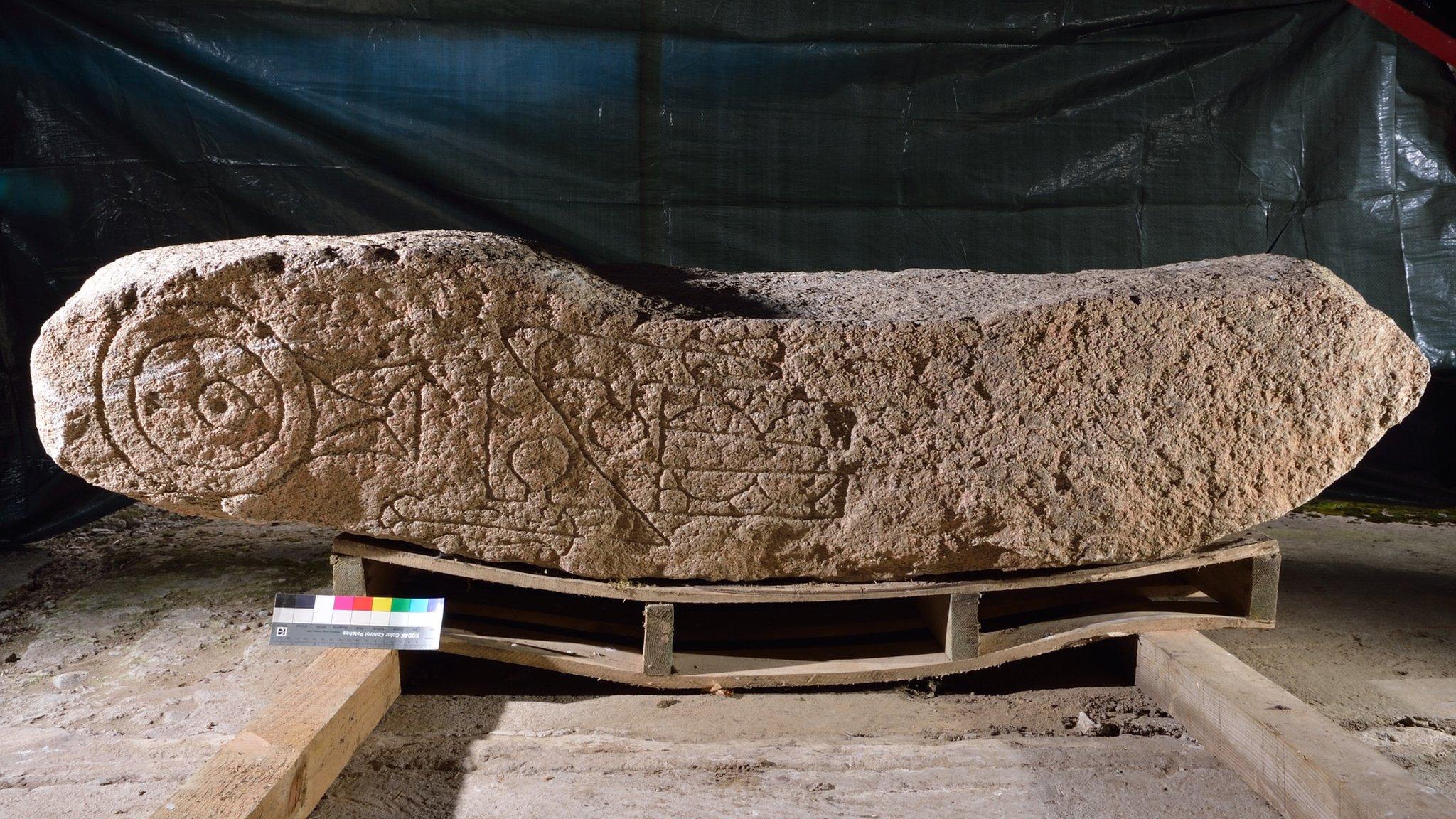
- Published9 September 2013
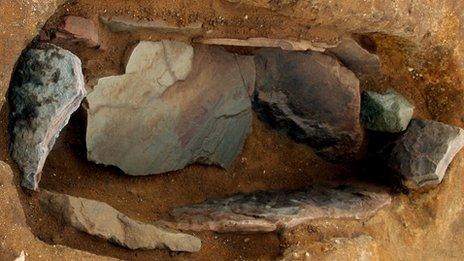
- Published14 September 2011
